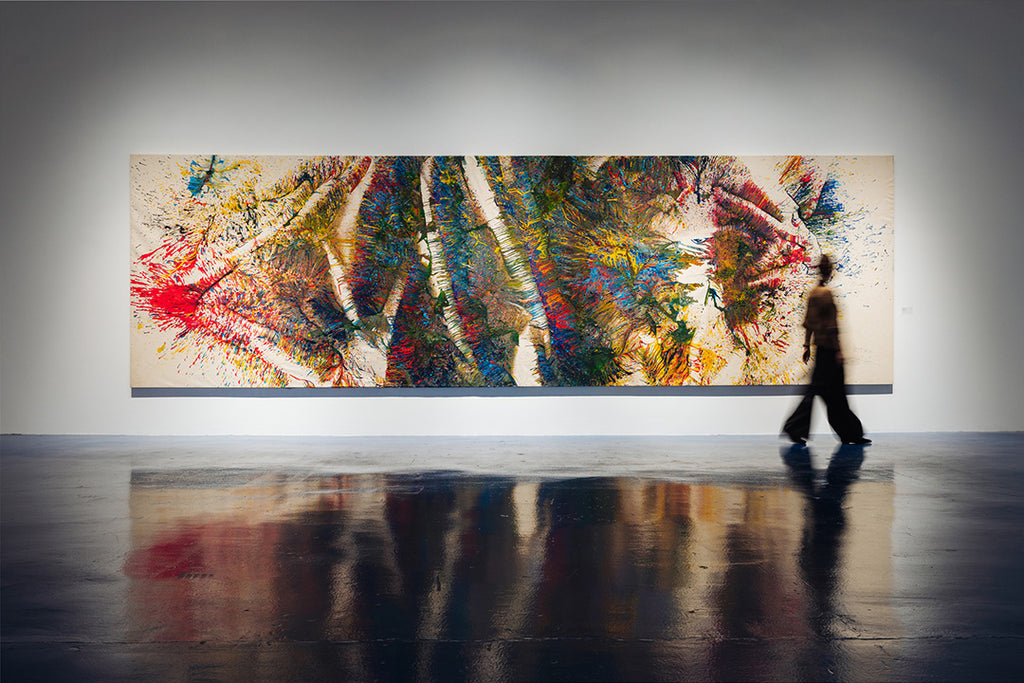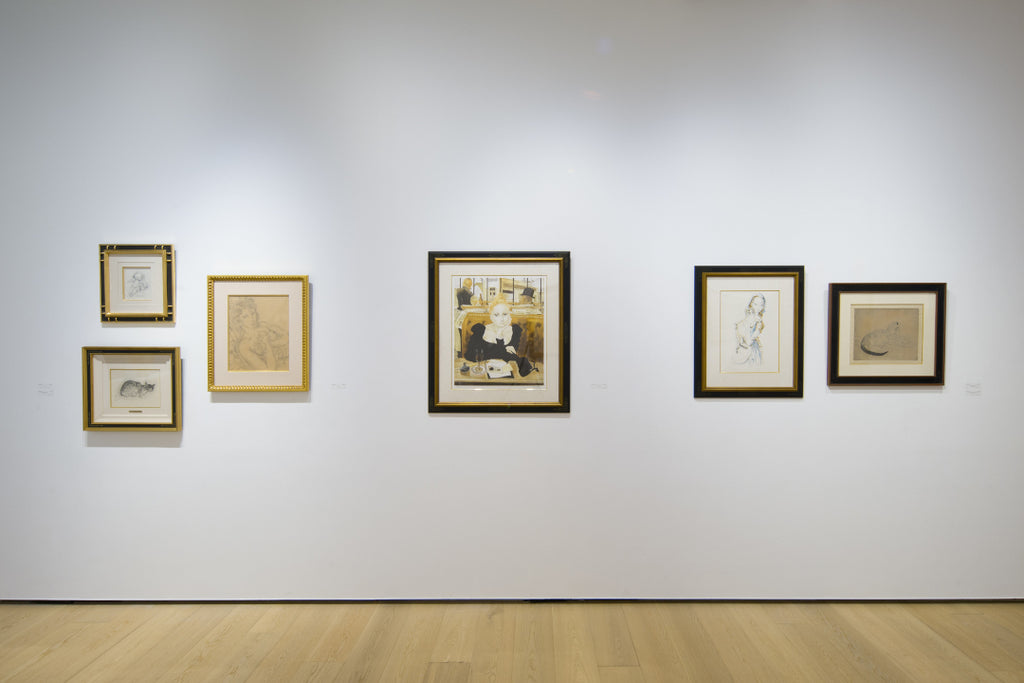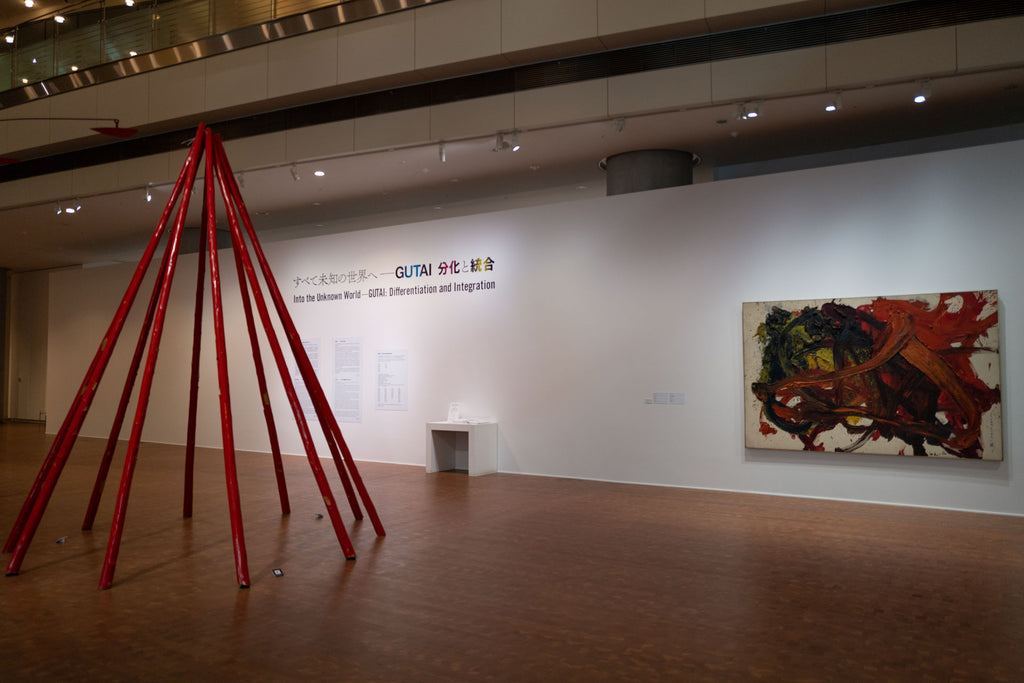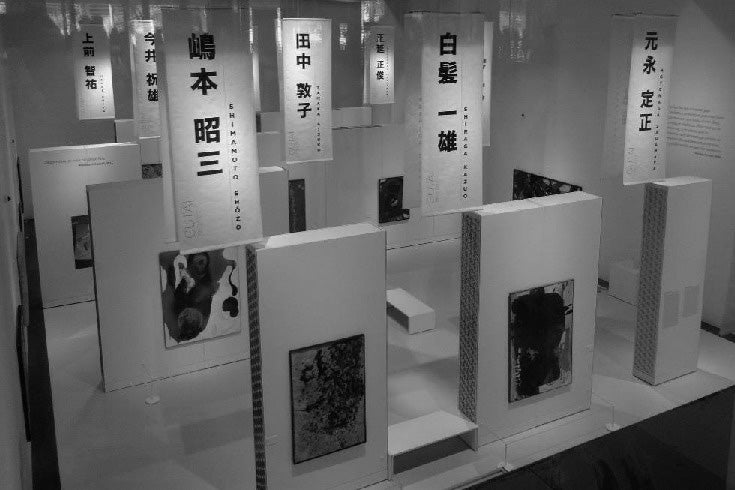ARTICLES
從「具體」的創立到解散一切盡知的「上前智祐」的創作活動
GUTAI STILL ALIVE 2015 vol.1
04/35

Chiyu Uemae
本系列企劃為您推出關於具體美術協會的書籍《GUTAI STILL ALIVE 2015 vol.1》的數字檔案。第4期由美術史學家、曾擔任多摩美術大學教授的本江邦夫先生為您介紹上前智祐及其作品。上前智祐是「具體」的始創成員,同時也是一直堅持到協會解散為止的為數不多的人物之一,將一生都投入到了創作之中。本江邦夫先生將滿懷激情地沿著這位藝術家創作活動的變化軌跡,介紹其藝術活動及作品的魅力。
勞動者=畫家
本江邦夫
多摩美術大學教授
1954年大阪一家食用油公司的社長、前衛藝術家吉原治良創建具體美術協會,即「具體」時,上前智祐便是其始創成員之一,直到1972年吉原去世、該協會解散為止,他一直身處協會之中,是為數不多的一直堅持到底的成員之一。1920年上前出生在京都府的一個貧困村莊,由於無法形容的極度貧窮,他很早就開始從事社會最底層的體力勞動,儘管過著幾乎淪為流浪漢的窮困潦倒的生活,但卻對藝術,而且還是真正的前衛藝術逐漸有所領悟,而其中的真正原因,人們則一無所知。究竟是什麼恩寵或奇跡所致?這只能被認為是藝術的種子精準地瞄準並撒在了這個勉強上過小學、命苦幸薄的年輕人身上。事實上,關於這位畫家與其藝術,最令人感動的地方之一就是儘管他一貧如洗,但卻沒有試圖依靠賣畫謀生,而是在認真完成每天的艱辛工作的同時,堅持不懈地為自己而創作。上前在1947年的一篇日記中寫道:「我必須靠幹活吃飯。但我的生命是依賴畫畫維繫的」(選自中冢宏行編輯的《上前智祐年譜》)。上前藝術的最大優勢在於,通過與他的現實即勞動之間形成的實乃牢不可破的聯繫,遠遠超越了只是再現事物的層次,達到了某種普遍性,即托馬斯·斯特恩斯·艾略特所說的「客觀相關物」(Objective Correlative)的境界。
1953年11月為了向吉原治良請教而前往位於蘆屋的其府邸拜訪時,上前智祐還是一名典型的自學成才的勞動者=畫家。值得注意的是,儘管沒有被任何人命令,他卻每周都會帶著自己的幾幅作品前往吉原府邸,持續經受來自吉原的毫不留情的評論或嚴酷評價。
「具體」的畫作大多給人以趁著某種勢頭在一瞬之間得以完成的印象。幾乎唯一的例外是上前智祐的作品,他通過濃厚地體現顏料物質性的無數點描,展現出多層次化的、抽象的、甚至是絕對的畫面。如果考慮到這也是上前對「自己的軌跡」進行確認核實的行為之一,那麼其畫作就完全可以說是「具體」的作品,而這一「自己的軌跡」正植根於他曾在鑄造廠工作的特殊日常。他之所以專注於這一點,是因為直接地看到了其中蘊含的所有生命存在的痕跡,正因為如此,他首先通過對說明性的、描寫性的文學元素進行否定而描繪出了點,而在這裡,點作為相互各異的個體,正是存在的、直接的隱喻,即痕跡。同樣的評價也適用於上前的其他作品,包括通過調色刀無止境地刻畫出線條,不知為何會讓人聯想起祈禱行為的全面覆蓋的靈性繪畫,以及將自己的存在本身縫入後進行實體化的藝術品。上前智祐的點和線是一個在平凡的日常中竭力生存下去的畫家的呼吸和心跳,正是在這裡,有著他那無可比擬的、現實的藝術性真實。
在談及上前智祐時,不得不提到他曾獲得不定形藝術掌門人米歇爾·塔皮耶的盛贊。在1958年4月的《新繪畫・世界展——不定形藝術與具體》(大阪·高島屋)上,塔皮耶在「具體」成員面前高度贊揚了上前只使用了紅色一種顏色的作品,甚至將這幅尺寸為100號的作品放在了弗朗茨·克萊因和吉恩·保羅·里奧佩爾的作品之間。隨後在1966年之後,上前開始在東京的日本畫廊舉辦個展,而根據笹木繁雄的說法,提供這一契機的也是塔皮耶。
在可稱為不定形藝術宣言的《另一種藝術》(1952年)中,塔皮耶針對沒有形狀就無法成立的雕刻,突出強調了繪畫具有本質性的「自由自在」。他指出,與雕刻家不同,「畫家炫耀般地通過隨意使用可無限增幅的技法,其實只是在沒有形狀地行動。在深不見底的無秩序中沒有形狀地行動。」值得注意的是上前智祐「自由自在」的創作,例如把60公斤重的火柴棍固定在一起的作品,或者在1970年代中期出現的、並在之後決定了其藝術高度的作品,也就是通過對學徒時代掌握的縫製能力的反復積累和徹底追求,對存在和行為進行物質化,並使其達到牢固狀態的作品,這一切不僅實現了塔皮耶的理念,同時也遠遠超越了它。因為我認為,將秩序重新帶回塔皮耶的無秩序之中的畫家,就是上前智祐。
上前智祐是一位在與進退兩難的現實對立和糾紛的過程中,將其轉化為自律性的藝術作品,並由此確立了自我的藝術家。他說:「經過全面而萬能訓練的這十根手指,把從大腦經過神經而產生的形象刻制在被選定的素材上」(1998年)。這一大腦(智慧)和手(感覺)之間的合作與融合是何等奇妙且完美?對於上前智祐來說,追求手指的感覺,也就是追求他具有「具體」屬性的現實本身,這不已經是藝術了嗎?如此與眾不同、不可比擬的藝術家,迄今為止我們怎麼會曾經一直視而不見呢?上前智祐的真實面貌,如今才初露端倪。
*文中提到的資訊是文章發佈當初的情況,某些部分也許已與現狀有所不同。
ARTIST
RELATED ARTICLES
-

行動繪畫的真相 | 嶋本・白髮的精神與國際聲譽
2023.08.31
訪談 -

在香港探索巴黎畫派畫家藤田嗣治的傑作
2023.02.10 香港
ART NEWS -

50 Years Since the End | The Gutai Art Association as seen at the National Museum of Art, Osaka
January 4, 2023
ART NEWS -

Musée Soulages Exhibition “Gutai, l’espace et le temps” (Gutai, Space and Time) and its Significance
A New Appreciation Contemporary Japanese and Asian Art
4/23



